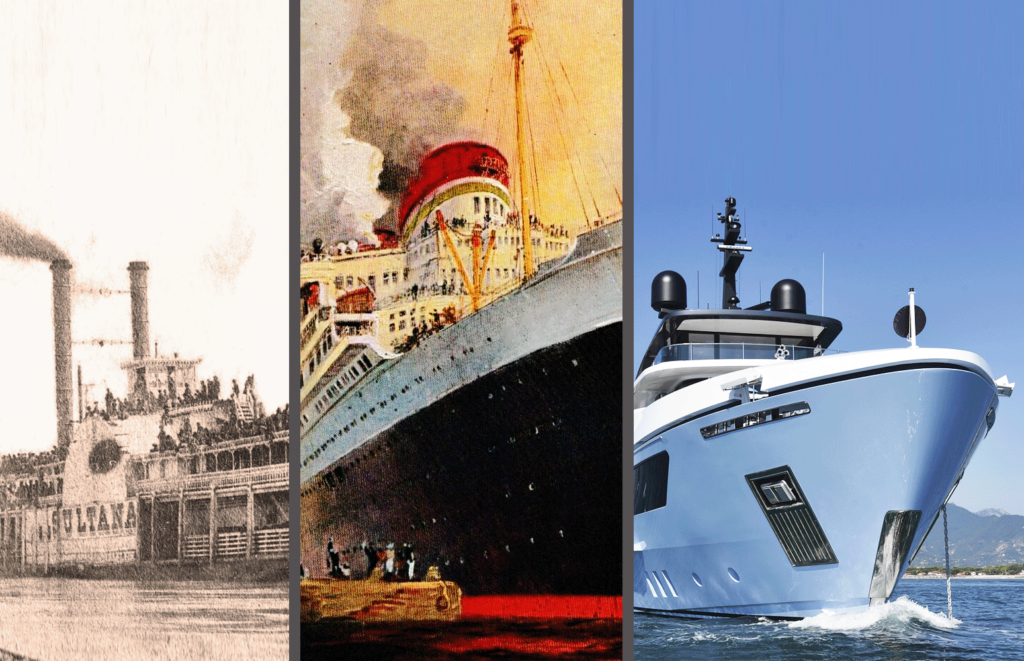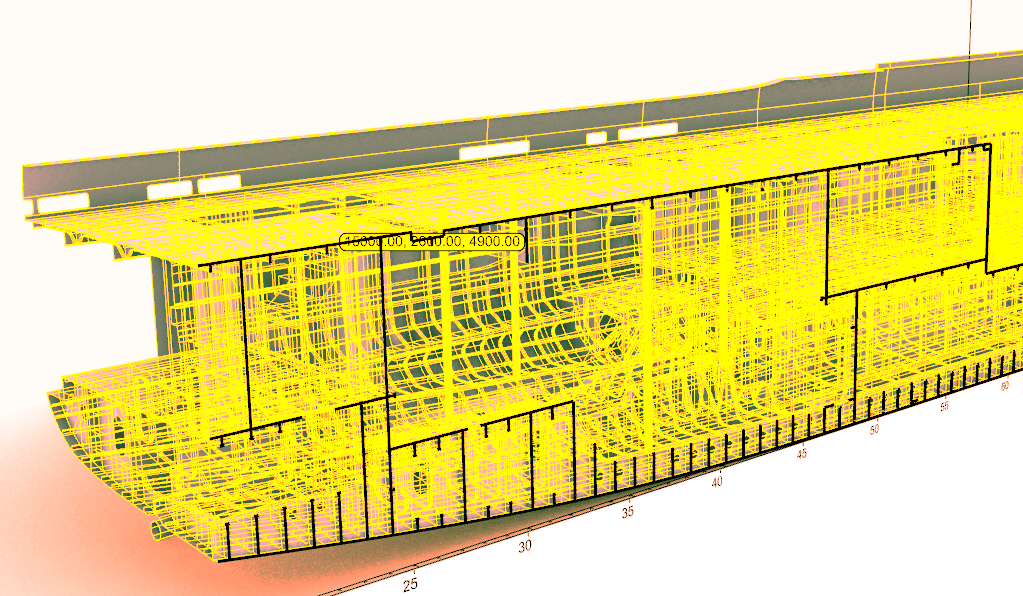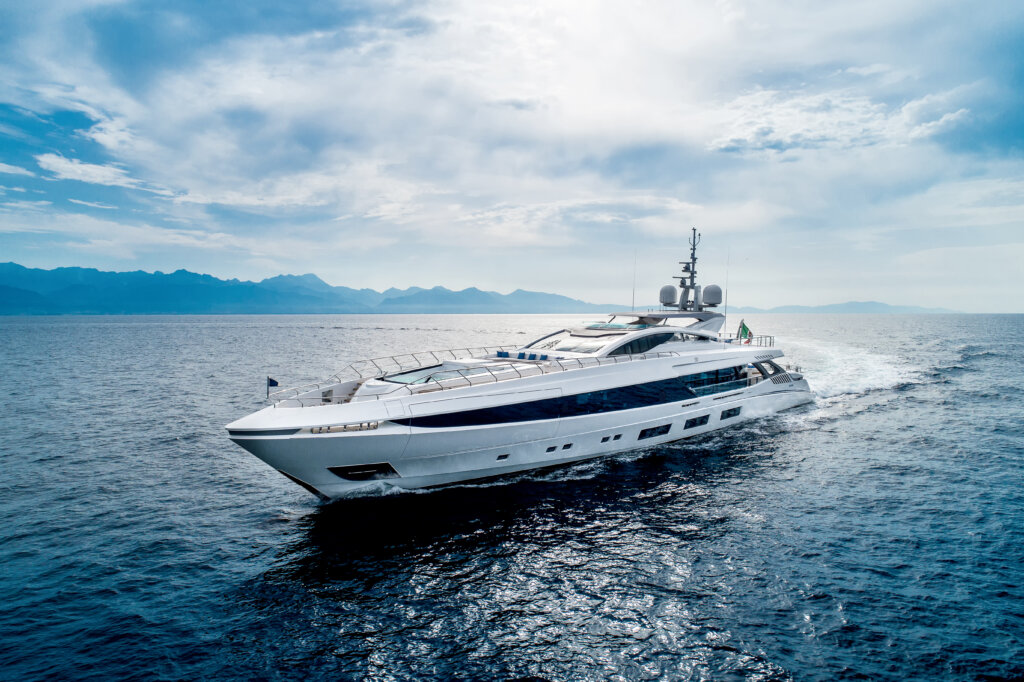The naval structure over the centuries has been transformed to meet the technological changes and use of ships: with it has also evolved the naval outfitting and furnishings.
The greatest turning point in the nineteenth century was due to two key factors: the introduction of the steam engine as a means of propulsion and the arrival of passengers on board ships.
Making room for the steam engine, on the one hand, obliges the naval architects to change the internal layout of the rooms; the presence of passengers-travelers unrelated to the logic of work on board the ship, instead, imposes objects and furnishings necessary for their journey.
In this initial phase, which lasted from the birth of the steamboat until the first decade of the twentieth century, the furniture was in the hands of the naval carpenter. The material used was wood and the appearance, essential, sober, and compact, was immediately distinguishable from any furnishings found on land.
Solidity, functionality and spartan lines were the constant stylistic of these boats and the naval furniture was limited to essential and functional objects such as benches, tables, handrails, and luggage spaces.

The Twentieth Century
The second phase of the naval furnishings coincides with the advent of one of the icons of the twentieth century: the ships of the line, and particularly the ocean liners. These sea giants were a mirror of society and a fusion of multiple aspects: technical, architectural, engineering, economic and social.
Their maximum radiance is placed in the decade between the two world wars, and here, the decorative and architectural commitment was remarkable and clearly visible, but concerned exclusively bridges, environments and cabins used by the prosperous social classes.
In the interiors of these jewels of technology and architecture, the craftsmanship of cabinetmakers, carpenters and inlayers combined decorative arts, sculpture, painting, design, and fashion. The style proposed followed the tastes of the time of that rich and wealthy élite by birth and not, and the work of the architects was totally unrelated to who designed the ship.
The aim, pursued together with designer, decorators, and upholsterers, was to hide and cover the structure and every element that remembered to be on board a ship. Travelling by sea was considered a necessity and not a pleasure, as well as a potential danger that passengers did not have to think about. The environments were inspired by those of the mainland and, behind the purpose of distracting and mesmerizing the passengers, the naval furnishings was redone of different styles and artistic schools mixed with exotic and distant elements to amaze and enchant travellers.

The Birth of the Pleasure Boating
In the thirties the naval furnishings began to move away from simple imitation to look for a style and an identity of its own and defined but it was the seventies that totally transformed every perspective.
The change in the conception and in the ideation of the naval furnishing is due to the advent of the pleasure boating and to the revolution of the same concept of the “living the sea” that this carried with itself.
Pleasure boats, as the term itself explains, are designed for recreation and fun, combine the playful and the mundane and yachts are the ultimate expression.

The Yacht Evolution
Yacht: large, exclusive and luxurious motorboat becomes status symbol, ostentation of wealth, glitz and beautiful life of a precise social circle, coveted, rich and seductive.
At the initial stage, more playful and devoted to the celebration of a certain society, the yacht is built with a view to greater speed and performance on the water and then gradually move towards the floating house vision where the connotation of exclusivity expands and refines its meaning.
The division between the inside and the outside is reduced and the idea of fun changes, when, in search of relaxation and psychophysical well-being, more extreme, exclusive, and refined sports experiences are combined.
Innovation and Customization in Naval Furnishings
The living areas widen, and the projects propose more and more transformable layouts: the experiential quality of life on board becomes the focal point of every design and furnishings choice. Every aspect is thought and designed to offer comfort to the user who, in living on board, seeks maximum customization and the same comforts of home.
The ever-increasing interaction between exterior and interior results on the one hand in increasingly large spaces, permeable and integrated with the marine environment and on the other in the search for a visual and chromatic continuity between the various spaces, made both in structural and engineering choices as well as with furnishings options. Choices that reward versatility and innovation, attention, and research in materials: from natural fibers such as wood, linen, wool and cotton to the most tech and innovative such as Lapitec®, bio-resins and recycled plastic.
The stylistic mark of the furnishings is not only spaces and materials but also lighting. Natural light has a specific role and becomes a fundamental piece of furnishings with windows and fenestration that are expanding more and more.
Fusion of Design
The architecture and the naval furnishings are always changed to the transformation of scenarios, requirements, and needs of its user and today the yacht is not mere ostentation of luxury: it is a search for the well done, innovation and customization.
Yachts have become fully-fledged houseboats and fusion is the keyword that, even today, continues to indicate all the progress of the design from pleasure: blends the idea of life on land with life at sea and blends spaces with the demands of life on board.





